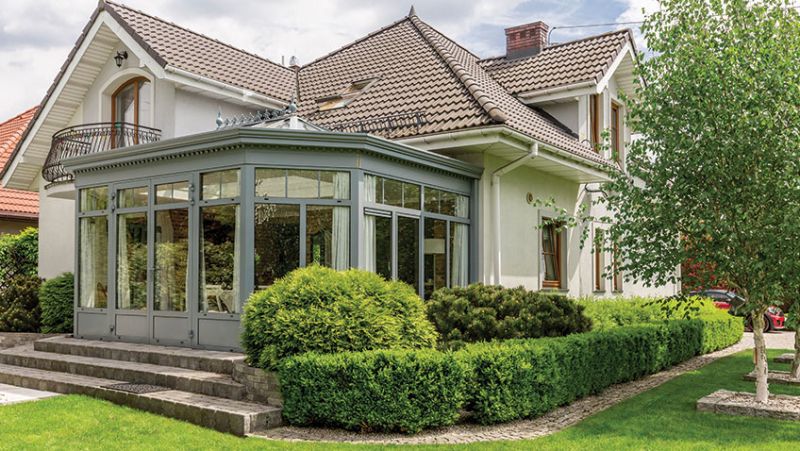
Buying or renovating a home is one of the biggest financial decisions you’ll ever make, and one question often lingers in the minds of UK homeowners, architects, designers, and tradespeople alike — are property surveys actually worth the cost? Whether you're purchasing your first flat in London, redesigning a Victorian terrace, or working on a client’s dream build, understanding the role and value of a professional property survey can protect your investment and uncover costly surprises before they happen.
In this blog post, we’ll break down what property surveys are, what kinds are available in the UK, who needs them, and most importantly — whether they’re worth your money. Whether you're a DIY enthusiast looking to rip out an old kitchen, a property developer, or simply planning a major home refurbishment, here’s the essential info you need before skipping that crucial survey.
What Is a Property Survey?
A property survey is an in-depth inspection of a property’s physical condition and structure, typically performed by a qualified surveyor. The aim is to identify existing or potential issues that may affect the property’s value or safety. In the UK, most property buyers commission a survey after their offer has been accepted but before contracts are exchanged — and for good reason.
Surveys vary significantly in their scope, from basic reports that provide a general overview to detailed investigations that reveal structural faults, hidden damp, subsidence, or roof damage. Surveyors look at elements like walls, floors, doors, insulation, plumbing, and electrical systems to give a realistic picture of what’s going on beneath the surface.
This is particularly important if you’re buying an older property, planning structural changes, or taking on an extension or loft conversion. A survey can serve as a “health check" and save you from expensive mistakes later on.
Types of Property Surveys in the UK
There’s no one-size-fits-all when it comes to surveys. Choosing the right one will depend on the building’s age, condition, and your intentions. Here are the main types of residential surveys available in the UK:
| Survey Type | Description | Typical Cost (2024) | Best For |
|---|---|---|---|
| RICS Level 1 Survey (Condition Report) | Basic survey focusing on the general condition, no advice or valuation. | £300 - £500 | Modern properties in good condition |
| RICS Level 2 Survey (HomeBuyer Report) | More detailed; includes defects, advice, and optional valuation. | £400 - £700 | Typical for most homes under 100 years old |
| RICS Level 3 Survey (Building or Structural Survey) | Comprehensive, includes in-depth analysis of structure and major faults. | £600 - £1,500+ | Older properties, listed buildings, major renovation projects |
Architects, interior designers, and tradespeople working on period properties or large-scale demolitions may also commission specific structural surveys or specialist inspections such as drainage or asbestos reports.
Are Property Surveys a Legal Requirement?
No — but they are strongly recommended. In the UK, you're not legally obliged to get a property surveyed before buying. However, lenders will usually require a basic mortgage valuation to ensure the property is worth the loan amount. Be warned: this valuation is not a proper survey. It’s carried out for the bank's purposes and may miss critical issues that could cost YOU thousands.
If you’re planning on doing a renovation or extension, you might need specific surveys like a measured building survey or topo survey for planning consent or architectural designs. Skipping these could delay your project or result in planning refusals.
For tradesmen and contractors quoting for refurbishments or structural alterations, a building survey can provide essential insights into what lies hidden behind walls or beneath floors — empowering you to provide accurate quotes and avoid mid-project surprises.
What Do Surveys Actually Find?
You might be surprised how many issues aren’t visible to the untrained eye. A RICS-approved surveyor can uncover problems like:
- Rising damp and timber decay
- Roof or gutter damage
- Subsidence or structural movement
- Drainage or plumbing concerns
- Unsafe electrics
- Prevalence of asbestos in pre-2000 homes
- Insulation issues or poor energy efficiency
These issues, if missed, could derail a costly DIY project or turn your dream home into a financial nightmare. Armed with a survey report, buyers or renovators can approach a sale with more confidence, renegotiate the price, or get repairs done upfront before moving in.
It’s not just about finding faults. Surveys also highlight opportunities for upgrading — for example, noting where loft insulation can be improved or where ventilation can be added to meet current building regs. For professionals, this is invaluable information when designing or quoting work.
How Much Do Property Surveys Cost (UK 2024)?
Prices depend on the type and complexity of the survey, size of the property, and regional location. On average:
- RICS Level 1 (Condition Report): Around £300–£500
- RICS Level 2 (HomeBuyer): Around £400–£700
- RICS Level 3 (Building Survey): Anywhere from £600 to over £1,500, depending on the size and age of the property
Yes, the cost can feel steep when you’re already wrestling with deposits, stamp duty, and solicitor fees. But consider this — replacing a roof can cost £5,000–£12,000. Fixing damp issues? Easily £2,000+. A £600 survey that identifies those problems upfront could save you ten times that amount.
In this context, a property survey becomes less of an added expense and more of an essential investment — one that often pays for itself.
Are Surveys Useful for Design and Renovation?
Absolutely. If you’re an architect, interior designer, or contractor renovating a home — especially an older one — a property survey can provide reliable baseline data before commencing any design work. Knowing the structure's true condition helps inform layout changes, choose materials, and identify whether extra supports or damp treatments are needed.
For example, if you’re taking on a kitchen extension project, a structural survey can reveal whether existing walls are load-bearing, whether underpinning may be needed, or if drainage routes need to be altered. This critical info saves time and revisions later down the line.
For DIYers and homeowners enthusiastic about doing their own refurbishments, knowing what’s safe to remove — and what definitely isn’t — can be a dealbreaker. It also helps ensure your work is compliant with UK building regulations.
Some surveys include photos, estimated costs, and recommendations — all of which can help guide renovation decisions or even reduce unexpected costs from builders during the project.
Can You Skip a Property Survey?
While tempting if you're watching the pennies, skipping a survey is gambling with your future finances. Even newer properties can have surprises lurking — botched DIY jobs, poor insulation, damp bridging — and it only takes one major fault to completely crush your renovation budget.
If you're buying a standard leasehold flat in a modern block where the building is regularly maintained, a Level 1 or 2 survey may be enough. But if you're diving into a Victorian conversion or a countryside farmhouse, skipping a Building Survey could be a costly mistake.
In short: if you're committing hundreds of thousands to a property, spending a few hundred on due diligence is simply smart risk management.
Conclusion: Are Property Surveys Worth It?
In almost every case, yes — a property survey is worth the cost. For buyers, it offers peace of mind and negotiation power. For renovators, it exposes hidden pitfalls ahead of your project. For professionals and tradespeople, it helps form accurate quotes and realistic timelines.
While not legally required, property surveys in the UK should be viewed as a sensible and proactive investment — not a grudge cost. With a full picture of the condition, structure, and potential of a building, you can make informed decisions, avoid nasty surprises, and protect your biggest asset.
And if you’re working with designers, decorators, architects, or contractors — giving them access to a recent survey can improve your build quality, speed, and budget accuracy.
So if you’re standing at the starting line of a major property purchase or home renovation — don’t cut corners. Start with a survey and build from a foundation of clarity, confidence, and safety.



